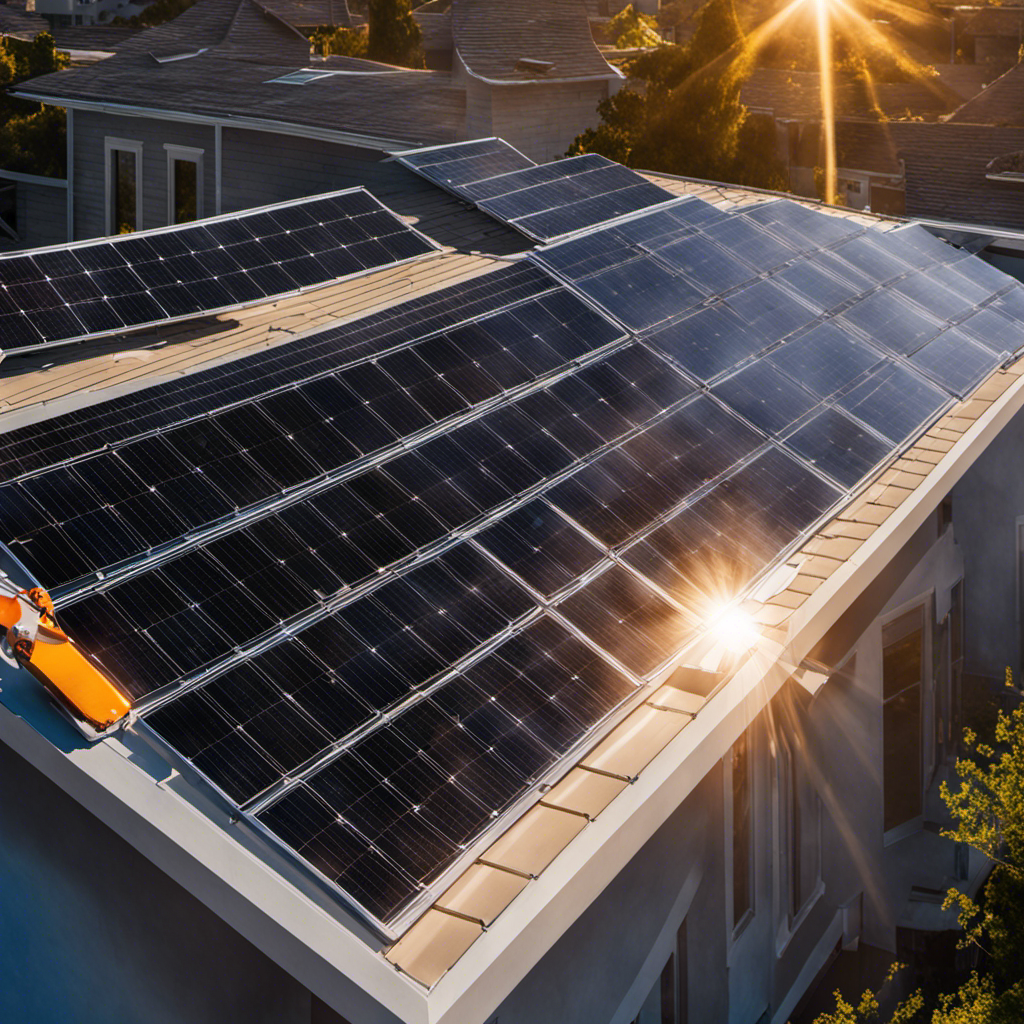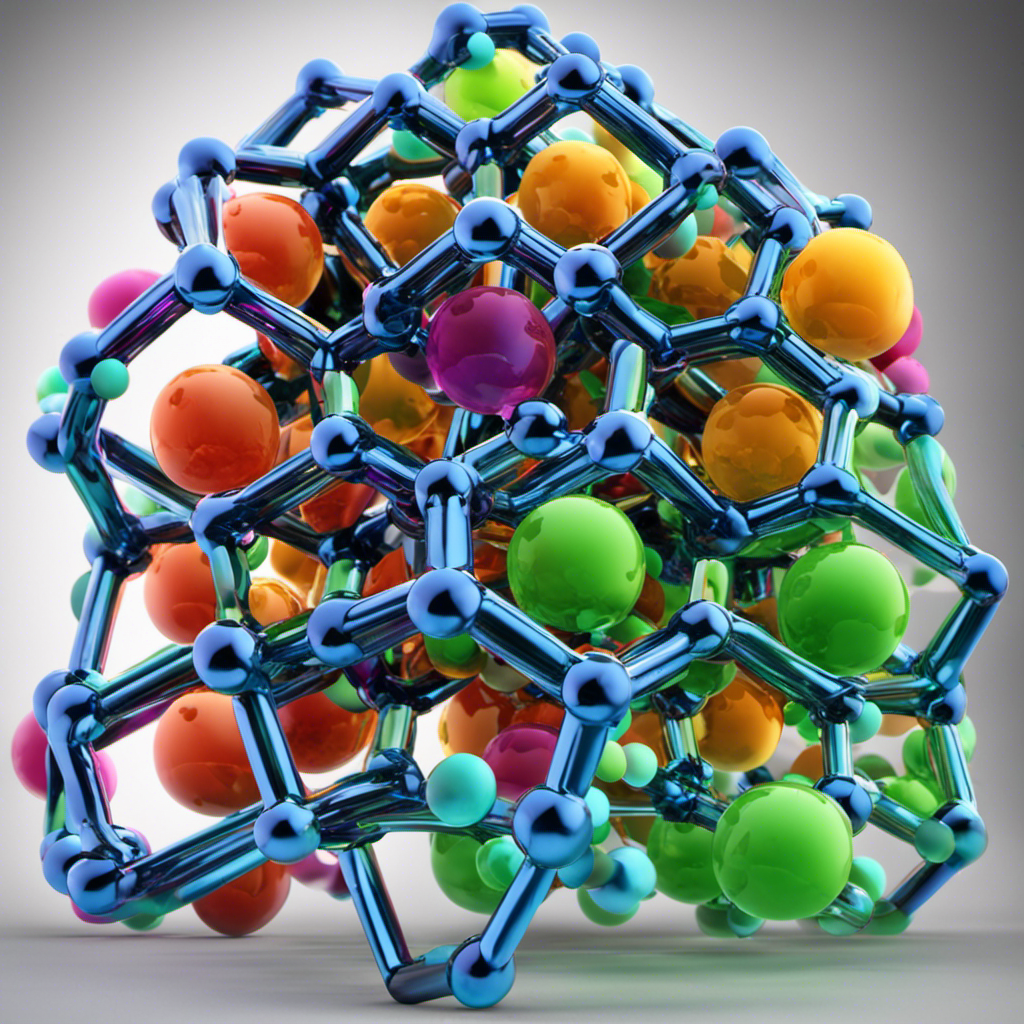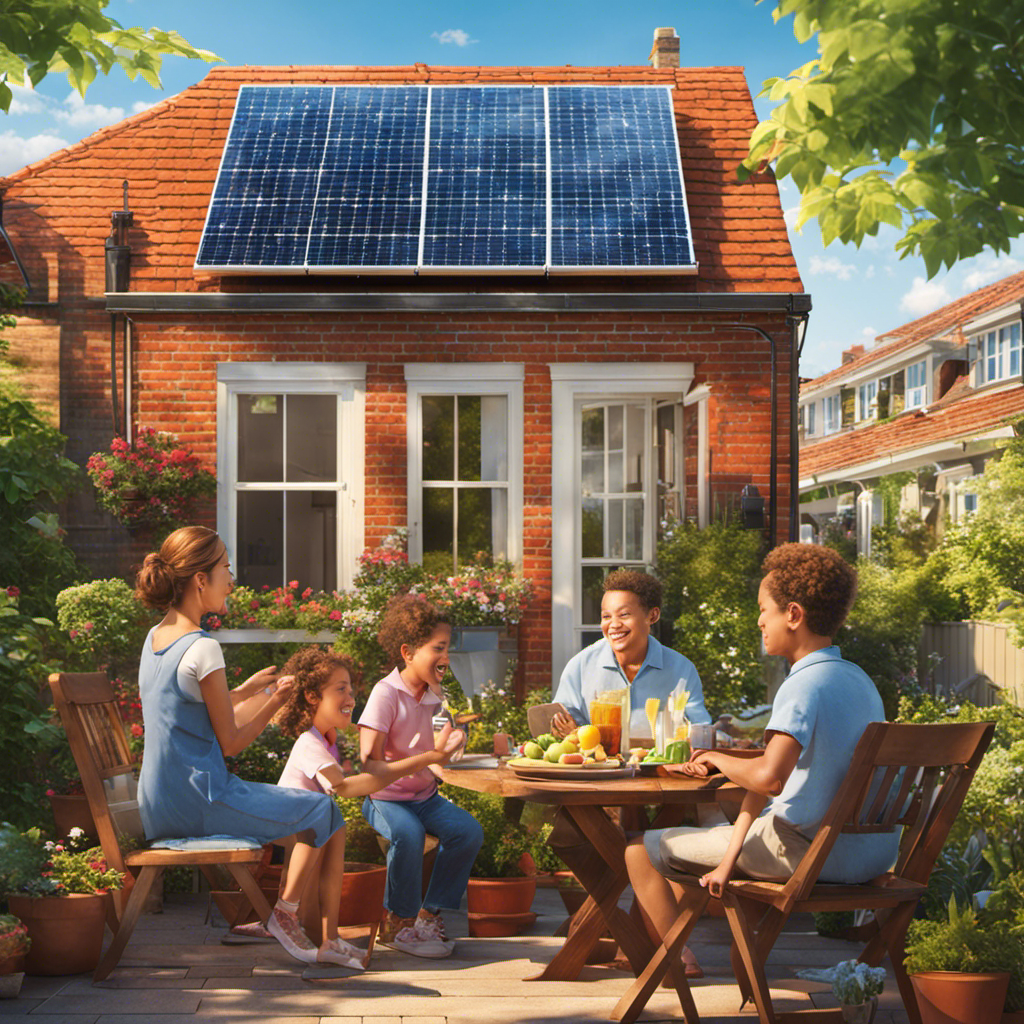Nuclear
Facts to Know About Three Mile Island

Three Mile Island is known for hosting one of the most catastrophic events in the commercial nuclear power industry’s history. On March 28, 1979, a partial meltdown in reactor Unit 2 took place, marking the most severe accident at a commercial nuclear power facility in the United States. Discover more about this tragedy and its impact on the people of Pennsylvania.
Unit 2
The nuclear regulatory commission has approved the sale of Unit 2 of Three Mile Island to energy company EnergySolutions, LLC. The deal involves transferring the license from the New Jersey Power Authority to EnergySolutions, which will manage the decommissioning. The company hopes that the plant will be decommissioned by the end 2025.
After an accident in 1979, Unit 2 on Three Mile Island was rendered unusable. The unit suffered a partial meltdown and loss of coolant. The reactor needed extensive repairs and the clean up effort continued until 1990. The unaffected Unit 1 was reopened in 1985, but Unit 2 has been shut down.
The decommissioning of Unit 2 of Three Mile Island will cost more than $1 billion. EnergySolutions is looking to buy the Three Mile Island Unit 2 reactor from First Energy, but it will not take Unit 1, which is still operational. Exelon plans to close the Three Mile Island Unit 1 reactor in the fall.
In 1979, the Three Mile Island reactor underwent a partial core meltdown. Nearly 99 percent of the reactor vessel’s fuel and other core debris were removed and transported to the Idaho National Laboratory in Idaho Falls. The plant is currently in Post Defueling Monitored Storage (PDMS) and is under constant monitoring.
Over a thousand skilled workers developed the clean-up plan and began in August 1979. The first shipments of accident-generated low-level radiological waste were shipped to Richland, Washington, and the final measurements of the fuel in the reactor vessel were taken in 1991. This process removed all remaining fuel and water.
Unit 1
Near Harrisburg, Pennsylvania, is the Three Mile Island power plant. It has two pressurized water reactors. The first unit (TMI-1) entered service in 1974 with an installed capacity of 880 megawatts (MW), or 819 MWe net. The second unit, TMI-2, was damaged in an accident in 1979 and has not been reopened.
In 1967, the General Public Utilities Corporation started construction on Unit 1 of Three Mile Island. The plant was expanded in the 1970s. Metropolitan Edison took over the operation of the reactors and plant while they were being built. Its reactors were pressurized water reactors, which are the most common type of nuclear power reactors in the world.
Exelon estimates that Unit 1 would cost $1.2 billion to decommission over 60 years. However, the plant has been shut down. The company plans to transfer Unit 1 and Unit 2 to other companies in the near future. Both units will be closed by the company before 2024.
The reactors at TMI are still radioactive. TMI units will remain radioactive for decades after their decommissioning. This is because it is a lengthy process. Some radioactive waste will remain onsite, but the company claims minimal environmental impact. The Pennsylvania Department of Environmental Protection will closely monitor the decommissioning process of TMI Unit 1.
In the 1970s, the United States was battling a major oil crisis. According to Smithsonian magazine, gasoline prices had risen by 81% from 1975 to 1988. Nuclear power plants were built across America hoping to find cheaper alternatives to petroleum. Nuclear energy was seen in Middletown as a solution to the problem.
The accident occurred on 28 March 1979, at 4 a.m. A malfunction in the reactor cooling system caused a pilot-operated relief valve to open, a process that should have closed ten seconds later. The valve was left open, which allowed the reactor to leak critical coolant water. This caused the reactor core to suffer catastrophic damage.
The operators mistakenly believed that the reactor’s core would overflow with water. Although the emergency cooling system was shut off, the operators could to restore the reactor to normal temperatures by 8 p.m.

Wind Energy
Wind Turbine Vs Nuclear
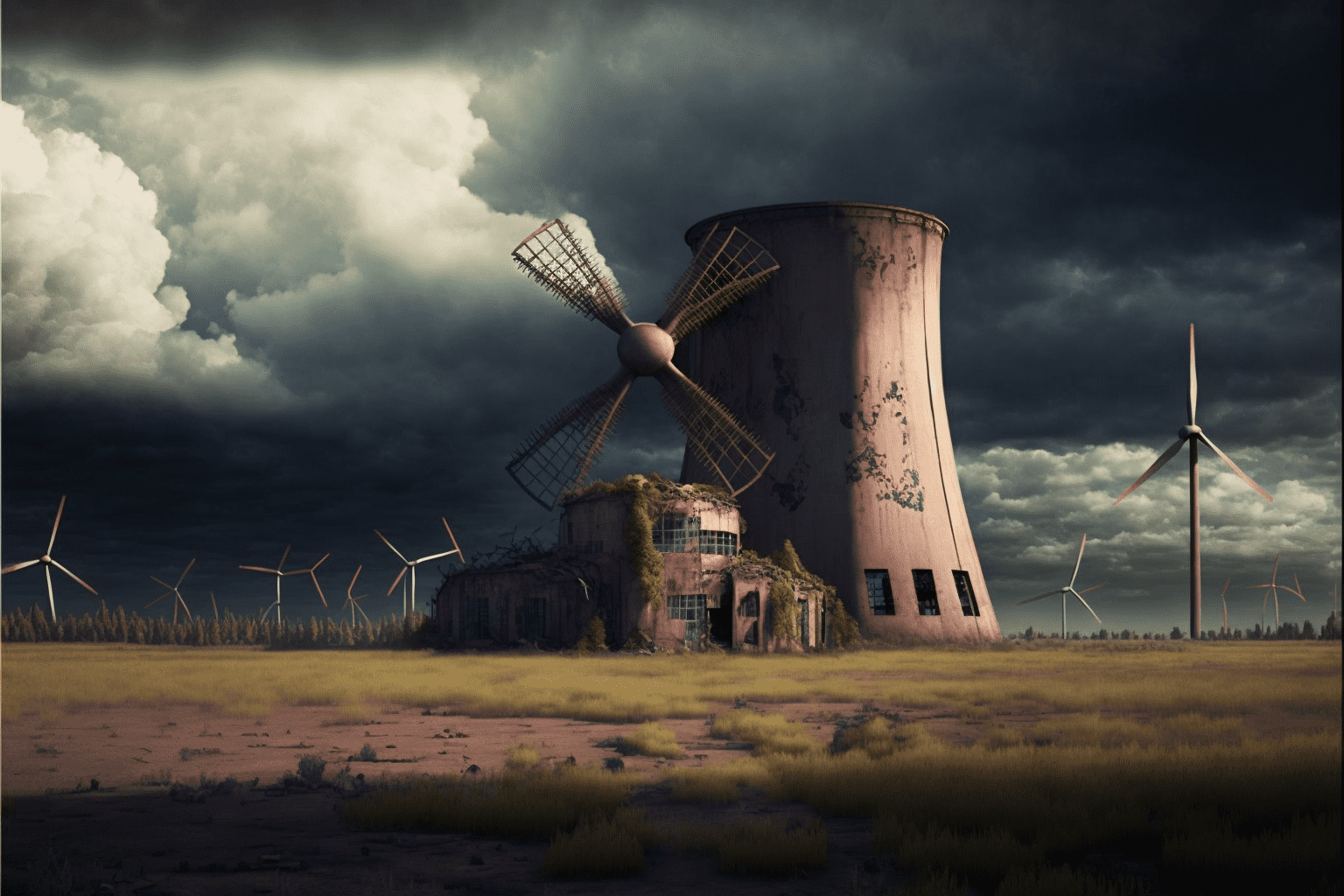
Wind turbines and solar panels might appear to be eco-friendly choices, yet the generation of energy from these sources demands a larger amount of land, generates lower amounts of electricity, and incurs higher costs compared to nuclear power.
Nuclear power plants are inflexible and often take years to construct, while smaller renewable projects can be completed quickly. Due to these factors, as well as wider social drivers, nuclear energy deployment cannot be done quickly or efficiently.
Cost
Wind turbines are far cheaper than nuclear power, with prices for solar and onshore wind having fallen by 70% over the past decade, while offshore wind has even further declined in price.
According to Lazard’s 2019 report, utility-scale renewable energy prices in the United States have continued to decrease since 2009, bringing them far below those for fossil fuel generation. They are now less than half as expensive as nuclear power – now just over $5/kW!
One of the primary reasons wind and solar are now more cost-effective than nuclear is their scalability. This makes it simpler to construct new wind and solar power plants than it would be to construct a coal plant.
Wind and solar power generation have become more cost-effective due to technological advancements. This underscores why it is becoming increasingly attractive as an alternative source of electricity generation – even more so than nuclear power.
According to the National Renewable Energy Laboratory’s 2019 Annual Technology Baseline, renewables’ levelized cost of electricity (LCOE) is projected to continue decreasing. Under its optimistic scenario, NREL projects that wind energy’s LCOE will drop another 64% by 2050 and solar power’s by 74%.
Another factor driving down the cost of renewable energy is its growing competitiveness against conventional fossil fuels in the power market. For instance, gas-fired power plants in America are now priced higher than renewables due to carbon costs.
Additionally, the costs of integrating intermittent sources into the grid have come down. This includes backup generation during times when wind or solar production isn’t taking place and transmission and distribution facilities to move energy from where it’s produced to where it’s needed.
System costs are the major driving force behind the declining cost of renewables.
Are you curious how much it would cost to install a wind turbine in your area? Installation of the wind turbine and any necessary components – like batteries or charge controllers – ranges from C$8,000 to C$11,000 per kW, depending on its size and location. This price includes installation of the turbine itself as well as any poles/towers it sits atop – along with any additional fees like design work.
Environmental Impact
The use of renewable energy in electricity production is often criticized due to its environmental impacts. This is because building large-scale renewable plants necessitates the use of rare materials, transport-related emissions, and other harmful activities.
Wind turbines can be an eyesore in some areas and may negatively affect local wildlife populations, depending on the type of facility and its siting. To minimize these effects, best practices should be employed during planning and siting processes. For instance, using proper land management techniques when developing offshore wind facilities helps minimize their effect on marine birds and fish populations.
Wind power still offers the potential for clean and renewable energy production despite its drawbacks. Its small footprint and high capacity factor make it a viable solution for countries looking to reduce their reliance on fossil fuels while meeting their energy demands in an environmentally friendly manner.
Nuclear energy poses its own environmental challenges and has become a controversial topic in many countries. To ensure the responsible production and disposal of nuclear fuels and wastes, an extensive Environmental Impact Assessment (EIA) must be conducted.
Conversely, renewable technologies like solar and wind power tend to be considered less harmful than nuclear energy as they produce less waste and emit fewer carbon emissions. To make a comparison between different energy systems more transparent, Life Cycle Analysis (LCA) can be used which compiles all relevant environmental impacts into one value that’s usually normalized according to the amount of electricity generated.
Nuclear power has the advantage of creating less waste from mining to final disposal than renewable energy systems, which can be further minimized through reprocessing old fuel rods or burying them. Furthermore, nuclear energy provides a consistent source of employment for years.
Therefore, to meet sustainability targets through rapid expansion of renewables, global nuclear energy would need to increase by 80%. To accomplish this goal, advanced economies would have to invest USD 1.6 trillion into their power sector from 2018-2040.
Reliability
Wind power is a popular renewable energy source, but it isn’t as dependable as nuclear. Unlike power plants burning coal or natural gas, turbines in wind farms may not operate to their full capacity due to variable weather conditions and other factors.
Wind turbines typically generate less than 25 percent of their rated capacity, so to match the output of a nuclear power plant with 1154 megawatts (MW), an extensive array of turbines is necessary.
Many opponents of renewable energy cite the capacity factor as a major issue, since it is not as reliable as power plants running on coal or natural gas.
Recently, however, the American Wind Energy Association (AWEA) reported that this may not be the case. Their data revealed that the amount of reserve electricity needed to protect against wind variability is far smaller than what would be needed by a conventional power plant.
As a result, the average cost of wind reserves is only four cents per kilowatt hour, as opposed to the 76 cents required to maintain a hedge against power plant outages.
One way to determine this is by looking at the reliability of wind and solar resources as a percentage of national demand over an extended period. The most dependable combinations of wind and solar generation have higher shares of renewables than their worst counterpart, which has only 3% renewables (on average; Fig. 2e, f).
Contrastingly, a typical system that meets 95% of a country’s demand still has numerous long-duration gaps that persist each year (yellow and green bubbles in Fig. 3; see Supplementary Figure 1).
Due to fluctuations in electricity demand, renewable sources are more variable than nuclear plants that run continuously once refueled.
By adding additional annual generation or energy storage, long-duration gaps are significantly reduced; the benefits are greater for countries with a small land area than those with larger ones. Furthermore, aggregating resources within 19 contiguous multinational regions or across 6 continents further improves reliability.
Safety
Wind turbines offer a sustainable alternative to traditional electricity sources, but they may pose risks to workers. Without safety equipment, workers could get electrocuted or hurt due to arc flashes and other electrical hazards.
The most dangerous potential hazard is falling from a height, especially for those working on top of turbines. This could result in serious injuries such as broken bones or severe burns.
Another potential risk is being struck by moving parts within the turbine. This is highly hazardous and could even result in death if not attended to promptly.
Fire safety is an increasingly critical concern for wind turbine operators. Anyone working on wind turbines – from repair and installation – should always wear the appropriate protective gear and use emergency descent devices like parachutes or drop lines in case of emergency.
While many would agree that nuclear power is a safer alternative than wind turbines, it’s essential to remember that no industrial activity is entirely risk-free. Those working in the nuclear industry understand accidents can and will happen, so they must do their best to minimize injuries.
Nuclear plant safety is ultimately the responsibility of its licensees, with oversight from independent national regulatory authorities. The European Union strives to have a robust transnational approach to nuclear safety across Europe in order to keep accidents to a minimum and minimize environmental and public risk.
This is why the European Union has prioritized nuclear safety, and why the International Atomic Energy Agency was created in the first place. This international regulator exists to guarantee that all nuclear activities around the world are secure and comply with current safety protocols.
Hi, I’m David. I’m an author of ManagEnergy.tv where we teach people how to save energy and money in their homes and businesses.
I’ve been a writer for most of my life and have always been interested in helping people learn new things. When I was younger, I would write short stories for my classmates and teach them how to do math problems.
I love traveling and have been lucky enough to visit some fantastic places around the world.
Solar
What You Need to Know About Solar Vs Nuclear Power
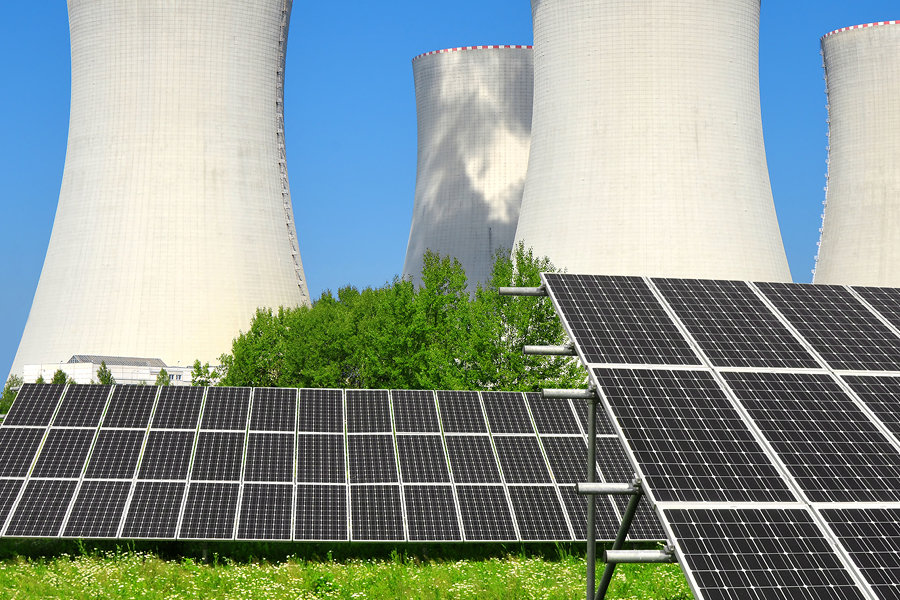
Both solar and nuclear power serve as means to produce electricity, yet they exhibit distinct differences.
Solar power is a renewable energy source that generates electricity through the use of solar panels. These panels convert the energy from the sun into electricity. Solar power is clean and does not produce greenhouse gas emissions, making it an environmentally friendly option. The cost of solar power has decreased significantly in recent years, making it more cost-effective. However, the efficiency of solar power can be affected by weather conditions and the availability of sunlight.
Nuclear power is a non-renewable energy source that generates electricity through the use of nuclear reactions. Nuclear power plants use nuclear reactions to heat water, which produces steam that drives turbines to generate electricity. Nuclear power is highly efficient and can generate large amounts of electricity. However, it can be expensive to build and maintain nuclear power plants, and there are concerns about nuclear waste and the potential for accidents.
In terms of carbon footprint, Solar power does not produce any greenhouse gas emissions, while Nuclear power does not produce carbon dioxide emissions during the electricity generation process.
In terms of safety, solar power does not produce any hazardous waste, and there is no risk of a nuclear meltdown or radiation leaks. However, some concerns have been raised about the potential for solar panels to cause fires or wildlife impacts.
In conclusion, both solar and nuclear power have their own advantages and disadvantages, and the most efficient option will depend on the specific location, technology, and energy needs of a project.

There are many different ways to power a home and one of them is by using solar energy. It’s also a popular choice for those who have concerns about the safety of nuclear power. While there are many benefits to solar energy, there are also a few things that you may want to consider before deciding to switch to a solar system.
Costs
Solar and wind are the cheapest ways to generate electricity. However, it is not just the cost that is low. There are other benefits such as reduced carbon emissions and lower maintenance costs.
For instance, a solar farm can be built in less than a year. In fact, the average lifetime cost of a new wind farm has dropped by 71 percent over the past decade. Moreover, there is no radioactive waste, so a solar farm can be easily maintained.
In comparison, a nuclear plant is an expensive way to generate electricity. In 2009, the OECD calculated the LCOE of a new nuclear plant to be $112 to $189 per megawatt hour. The cost of building a new solar plant was $36 per megawatt hour.
As the cost of solar continues to drop, it is clear that utility-scale solar is now the cheapest means of generating energy. In fact, it is cheaper than natural gas.
Onshore wind is also a viable option for utility-scale power generation. The OECD estimates that a five-year compound annual decline in LCOE for onshore wind is 4%.
While the cost of solar is significantly lower than that of a new nuclear power plant, it is not yet cheaper than new coal. Furthermore, coal plants are more susceptible to changes in fuel prices.
A recent study from Lazard estimates that the cost of power generated by utility-scale solar is $31 per megawatt hour. This compares favorably with that of existing coal-fired and natural gas-fired plant. Nevertheless, even the most generous estimates show that the cost of solar is not nearly as competitive as that of a new nuclear plant.
CO2 Emissions
The relationship between CO2 emissions and renewable power can be investigated using regression analysis. Renewable power includes wind, onshore and concentrating solar power. These are not carbon-free, but they reduce the national level of CO2 emissions.
However, energy scenario models do not account for the energy required to produce renewables. They also underestimate the difficulty of meeting climate targets. This makes them less useful for predicting how the world will change in the near future.
There are several reasons why solar and nuclear have lower CO2 emissions per unit of electricity than fossil fuels. For example, a coal plant’s footprint is around 1,050 gCO2/KWh. In comparison, a wind turbine’s footprint is four grammes of CO2 equivalent per kWh.
Nuclear power is also known to have the lowest levelized CO2 emissions over its operating lifetime. It has a low carbon footprint, but it is only half the size of nuclear’s.
Some critics argue that building renewables has a large hidden carbon footprint. That is, in addition to the direct carbon emissions, you have to consider the indirect emissions associated with the energy used to build the system.
In contrast, the best solar technology in the sunniest location has a footprint of just three grammes of CO2 equivalent per kg of electricity. A nuclear plant’s footprint is just 15 to 50 gCO2/KWh.
As for the correlation between renewable and nuclear power, a negative one indicates that there is a causal link. This may explain the German energy policy that replaces nuclear with green power.
Similarly, a positive correlation means that there is a causal link between a particular variable and another. This can be explained by wealthier European countries investing more in renewables.
Durability of Solar Cells
The long-term reliability of PV solar modules depends on many factors, from the materials to the manufacturing process. However, the main failure modes and degradation mechanisms have been documented for several decades.
Failure of solar panels can occur due to a number of environmental factors. These include temperature, humidity, wind, and other forces. In rare cases, a panel may overheat and ignite.
The main degradation mode is cell breakage. Breakages may be accompanied by delamination of the polymeric encapsulant. This leads to hot spots. Hot spots may cause a module to overheat. Additionally, encapsulant bleaching, discoloration, and cracking can occur.
Other degradation mechanisms are based on UV exposure. This can affect the polymers used to encapsulate PV cells. Moisture, sand, and other debris can also penetrate the encapsulants. This can result in corrosion and other problems.
Some of the most common PV equipment failures are delamination, bubble formation, and faulty power connections. Detection of these types of defects can improve the reliability of a module. Thermal imaging cameras are an excellent tool for detecting defects.
Photovoltaic modules are tested for youthful failures before delivery. However, there are also accelerated tests that simulate field conditions. Accelerated tests stress PV modules at higher levels than those found in the field. They are used to screen for safety issues, characterize modules, and verify the reliability of the products.
The reliability of PV modules is often evaluated by the International Photovoltaic Quality Assurance Task Force (PVQAT). PVQAT develops new methods and technologies to help companies improve the quality of their PV equipment.
One common method to test for PV module failures is scanning acoustic microscopy. SAM is a technique that can detect defects in a monocrystalline silicon cell.
Disposal of Radioactive Materials and Wastes
The dilemma of how to dispose of radioactive materials and wastes has been a subject of debate for decades. It has involved government, academics and the industry. There is increasing interest in innovative advanced nuclear technology, and new waste solutions are being developed.
Radioactive waste comes from many activities. Nuclear power generation, weapons manufacturing, nuclear medicine and research are a few of the many sources. During the atomic age, the United States and other countries have produced hundreds of thousands of tons of radioactive waste.
The government has regulated the storage and disposal of radioactive waste. In Oregon, OAR 345-050 lists the types of material that are exempt from disposal, and also outlines the rules for the disposal of radioactive waste.
Radioactive waste can be stored for several years. The time period depends on the type of waste and the radioactive isotopes that make it up. For example, spent nuclear fuel can be safely stored at an interim facility, while high-level waste must be placed in a geological repository.
Several short-term approaches to the storage of radioactive waste have been used, including segregation, storage near the surface and deep geologic repositories. However, many environmental groups have opposed the plans for these facilities.
The Nuclear Waste Policy Act establishes procedures for the evaluation of potential sites for deep geologic repositories. A consent-based siting process is being used to select these sites.
While the government has stopped construction of the nuclear waste facility near Yucca Mountain, Nevada, there are still a number of nuclear waste sites in the United States. Used nuclear fuel and other radioactive materials are stored at dozens of reactors. Unlike spent nuclear fuel, most of the radioactive materials at these sites are considered low-level waste (LLW). These wastes are generally safe to store at shallow land burial sites.
Alternatives to Fossil Fuels
There are a few different types of alternatives to fossil fuels. These include solar power, wind power, and nuclear energy.
These forms of power are relatively cheap to produce and do not contribute to greenhouse gas emissions. However, it’s difficult to estimate the true cost of their production. The environmental costs of these fuels are also not small.
Fossil fuels provide a large part of the world’s electricity. Natural gas and coal are the two main sources. But, oil is also an important source of electricity.
Several other alternatives to fossil fuels are in development. Biomass, for instance, is a type of energy that is produced from organic matter.
Renewable energy is a broad term that includes sources such as hydroelectric, wind, and solar. Although these are not completely renewable, they are considered to be a better option.
As technology advances, these alternative sources of energy may become more viable and less expensive. Nonetheless, they are still a challenge to engineer and produce.
There are a few ways to compare the various forms of alternative energy. First, consider their similarities and differences. Next, look at how they perform compared to fossil fuels.
It’s not uncommon for consumers to focus on the marginal differences between the various sources of renewable energy. Likewise, it’s common to focus on the technical benefits of wind or solar energy.
Wind power has been around for decades and is one of the most widely utilized renewable sources. Similarly, solar power is becoming more popular.
Interestingly, solar and wind energy do not emit greenhouse gases. While these sources are not without their drawbacks, they are nevertheless considered to be a major advancement in the quest to combat climate change.
Hi, I’m David. I’m an author of ManagEnergy.tv where we teach people how to save energy and money in their homes and businesses.
I’ve been a writer for most of my life and have always been interested in helping people learn new things. When I was younger, I would write short stories for my classmates and teach them how to do math problems.
I love traveling and have been lucky enough to visit some fantastic places around the world.
Nuclear
Nuclear Fuel Facts – Uranium

The World Nuclear Association gathers information on the utilization of uranium for generating nuclear energy. This information is not comprehensive and may be updated with the availability of new data. According to the Association, only nations that are signatories of the Nuclear Non-Proliferation Treaty (NPT) are permitted to purchase uranium. These nations are obliged to allow international oversight and demonstrate a commitment to avoiding the spread of nuclear weapons. Although nuclear energy commonly brings to mind images of nuclear armaments and reactors, the varieties of radioisotopes utilized in nuclear power facilities have evolved significantly in recent years.
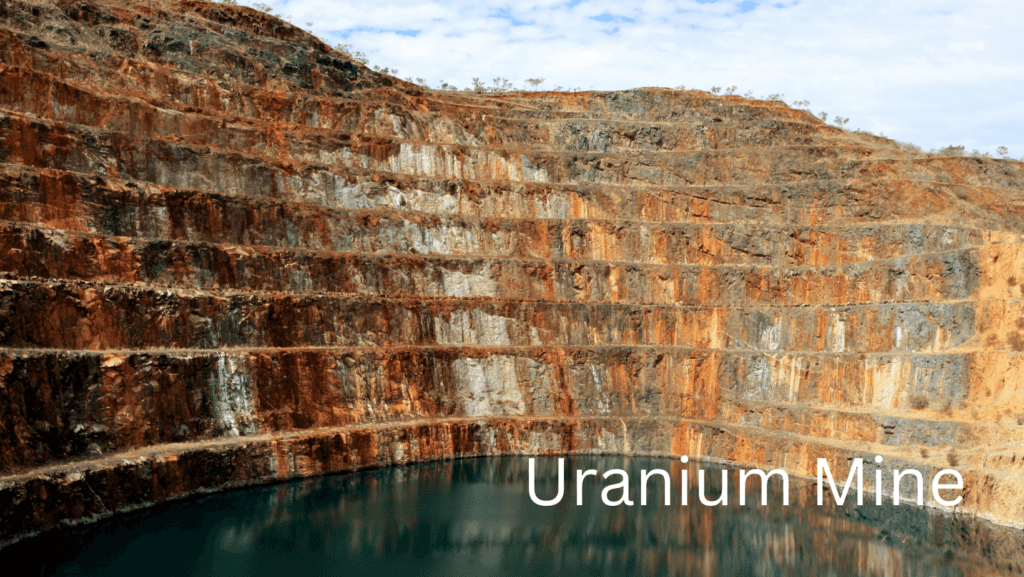
Uranium is a common metal
Uranium is the 92nd element in the periodic table and the heaviest naturally occurring element on Earth. It is also a powerful concentrated energy source, having the highest energy density of any known world fuel. Uranium is mined commercially from uranium-bearing minerals.
For over 60 years, uranium has been used for nuclear power. It is found in the Earth’s crust at concentrations of between two and four parts per million. It is also present in the oceans. In fact, uranium is so familiar that it can be recovered from seawater and is used to power nuclear power plants. A German chemist, Martin Klaproth, discovered uranium in 1789 in the mineral pitchblende. He named the metal Uranium in honor of the planet Uranus.
It has the highest atomic weight of all naturally occurring elements
Uranium, a rare earth element, has the highest atomic mass of any naturally occurring element and is used to make nuclear fuel. The chemical process of uranium production begins with the extraction of uranium ore. The next step is processing and refining. The result could be a form or nuclear fuel depending on how much uranium is present. The element is generally considered safe for consumption or use in small quantities. It is however difficult to work with in larger quantities than milligrams due to its presence in uranium scrap.
Uranium is the 92nd element in the periodic table, and it is also the heaviest naturally occurring element in the Earth. Uranium is a good choice for fuel because it has the highest energy density among all the natural elements.
It is destroyed by alpha particles
When uranium decays by alpha particles, it releases energy in the form of kinetic energy. A single alpha particle has a potential energy of approximately 6.1 MeV. This energy is transferred into the recoiling nuclear nucleus. The alpha particle is the most energetic component of the decay, as it requires a large amount of energy to reach the nucleus.
Alpha decay is the most common type of cluster decay and is a form of radioactive decay that ejects a defined daughter collection of nucleons and leaves a product with a lower mass. Fundamentally, alpha decay is a quantum tunneling process that is governed by the interaction between the strong nuclear force (and the electromagnetic force).
It can cause cancer
The toxicity of uranium is the same for depleted and natural uranium. It spreads throughout the body and tends to accumulate in the bones and kidneys. Although it can remain in the bones for years, it leaves the body in urine in one to two weeks. The body excretes most of its uranium.
The primary mechanism of uranium toxicity is direct DNA damage caused by interactions with alpha particles. The most likely site of cancer is bone sarcomas, but there are also other cancers that may occur after exposure to uranium.
It is used as a fuel in nuclear reactors
The nuclear fuel cycle is made up of steps in the front end that prepare the uranium for use in nuclear reactors and steps in the back end that manage, prepare and dispose of the spent fuel. The safe management of spent nuclear fuel is the focus of the front end of this cycle.
Nuclear reactors use uranium pellets to produce energy by undergoing nuclear fission. This process produces enormous amounts of heat that powers turbines and generates electric power. The fuel is made of low enriched uranium, which is packaged into long vertical tubes and then inserted into the reactor.
It is mined in 20 countries
Twenty countries are home to uranium, with Iran being the latest. Australia and Canada produce 44% of the world’s uranium, while Uzbekistan and Namibia produce about 6% each. The world’s uranium supply is not enough to meet the demands of nuclear power reactors.
Canada: Canada has the largest uranium reserves, accounting for more than 9% of the world’s recoverable supply. Its strategic location, as the world’s 18th largest economy, has made it a major force in the global uranium market. Canada’s uranium mining industry is dominated by Cameco, which has several major investments. Cigar Lake and McArthur River are the largest Canadian uranium mines.
-

 Sustainable Supply Chain Management2 months ago
Sustainable Supply Chain Management2 months agoManagEnergy Acquires GPST2030.org Domain to Strengthen Commitment to Sustainable Transport
-

 Wind Energy3 months ago
Wind Energy3 months agoHow Much Oil Does It Take To Lubricate A Wind Turbine
-

 Electric Motorbike3 weeks ago
Electric Motorbike3 weeks agoCalifornia Electric Motorcycle Laws: A Comprehensive Guide to Riding Safely
-

 Electricity Vehicle3 weeks ago
Electricity Vehicle3 weeks agoThe Future of Electric Vehicles: Trends and Innovations to Watch
-

 Solar2 months ago
Solar2 months agoIn 2009, About What Percent Of U.S. Energy Consumption Was Supplied By Solar Energy
-

 Wind Energy3 weeks ago
Wind Energy3 weeks agoEnvironmental Innovation Turned Deadly: Ocean Wind Turbines Pose Threat to Whales’ Survival
-

 Wind Energy3 weeks ago
Wind Energy3 weeks agoRevolutionizing Highways: Wind Turbines Take the Road to Renewable Energy
-

 Solar2 months ago
Solar2 months agoWhy Should We Use Solar Energy Instead Of Fossil Fuels






